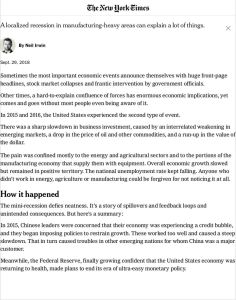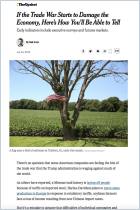Join getAbstract to access the summary!

Join getAbstract to access the summary!
Neil Irwin
The Most Important Least-Noticed Economic Event of the Decade
A localized recession in manufacturing-heavy areas can explain a lot of things.
The New York Times, 2018
What's inside?
The United States fell into a “mini-recession” in 2015 and 2016.
Recommendation
Many people in the United States in 2015 and 2016 were unaware that a “mini-recession” was going on at the time. Back then, emerging markets were weakening, the US dollar was strengthening and commodity prices were falling, stifling the US agricultural, energy and related manufacturing sectors. But according to financial journalist Neil Irwin in this astute analysis, then-Federal Reserve chair Janet Yellen did notice it, and she acted to avoid turning an isolated contraction into a more widespread recession. Readers will find this a revealing look inside the Fed’s thinking.
Summary
About the Author
Neil Irwin is an author and a senior economics correspondent for The New York Times.





















Comment on this summary